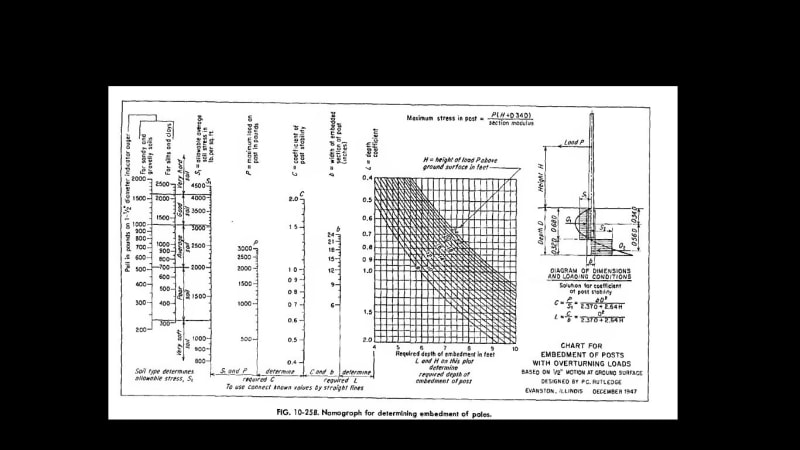I am doing a simple member design of a horizontally loaded steel post embedded in the ground. The ground conditions are assumed to be damp/sandy clay with a bearing capacity of up to 150 kPa.
This is an Australian situation so I am referring to AS/NZS 4746 - Structural design requirements for utility service poles. This standard provides the following free body diagram for a variably embedded pole, with the key assumption of the centre of rotation of the footing located at two thirds of the embedment depth below the ground surface.

Now is the design moment simply the horizontal force (Hr) multiplied by the depth to the ground surface (hf)? Or do I need to consider the distance (2D/3) to the 'Pivot depth' underground as well? Please refer to the above image.
My thoughts are that we need to consider the distance to the pivot point in our moment calculation, as the post is assumed to be rotating about the pivot point.
Sorry its a simple question but I am looking for some clarification.
Thanks,
This is an Australian situation so I am referring to AS/NZS 4746 - Structural design requirements for utility service poles. This standard provides the following free body diagram for a variably embedded pole, with the key assumption of the centre of rotation of the footing located at two thirds of the embedment depth below the ground surface.

Now is the design moment simply the horizontal force (Hr) multiplied by the depth to the ground surface (hf)? Or do I need to consider the distance (2D/3) to the 'Pivot depth' underground as well? Please refer to the above image.
My thoughts are that we need to consider the distance to the pivot point in our moment calculation, as the post is assumed to be rotating about the pivot point.
Sorry its a simple question but I am looking for some clarification.
Thanks,

